Predation
Predation is the act of one organism, known as the predator, feeding on another organism, known as the prey. This interaction is a key component of ecological systems and plays a crucial role in the balance of populations within an ecosystem.
Types of Predation
There are several different types of predation, including:
- Carnivory: Predation in which the predator consumes animal prey.
- Herbivory: Predation in which the predator consumes plant prey.
- Parasitism: A relationship in which the predator (parasite) feeds on the prey (host) without necessarily killing it immediately.
- Predatory symbiosis: A relationship in which one organism benefits at the expense of another, such as in the case of a predator-prey interaction.
Adaptations for Predation
Both predators and prey have developed various adaptations to aid in their survival in the predator-prey relationship. Some of these adaptations include:
- Camouflage: Predators may have camouflage to help them blend in with their surroundings, making it easier to ambush their prey.
- Speed and agility: Predators may be fast and agile, allowing them to catch their prey.
- Defensive mechanisms: Prey may have defensive mechanisms such as spines, toxins, or protective coloration to deter predators.
- Mimicry: Some prey species mimic the appearance of other organisms that are dangerous or unpalatable to predators.
Ecological Importance
Predation plays a crucial role in regulating populations within an ecosystem. It helps to control the abundance of certain species, preventing any one species from becoming too dominant and disrupting the balance of the ecosystem. Additionally, predators can influence the behavior and physiology of their prey, leading to further effects on the ecosystem as a whole.
Study Guide
Here are some key points to remember about predation:
- Define predation and identify the predator and prey in a given scenario.
- Explain the different types of predation, including carnivory, herbivory, parasitism, and predatory symbiosis.
- Discuss the adaptations that predators and prey have developed for survival in the predator-prey relationship.
- Describe the ecological importance of predation and its role in maintaining the balance of populations within an ecosystem.
Understanding predation is essential for comprehending the dynamics of ecosystems and the interconnectedness of species within them.
[Predation] Related Worksheets and Study Guides:
.◂Science Worksheets and Study Guides Fifth Grade. The 6-Kingdoms of life
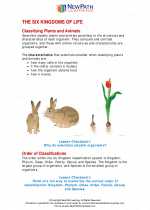
 Activity Lesson
Activity Lesson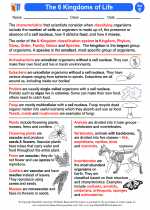
 Worksheet/Answer key
Worksheet/Answer key
 Worksheet/Answer key
Worksheet/Answer key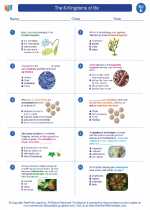
 Worksheet/Answer key
Worksheet/Answer key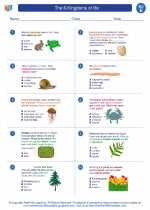
 Worksheet/Answer key
Worksheet/Answer key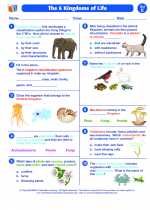
 Vocabulary/Answer key
Vocabulary/Answer key
 Vocabulary/Answer key
Vocabulary/Answer key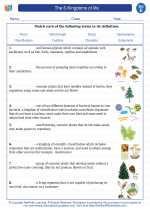
 Vocabulary/Answer key
Vocabulary/Answer key
 Vocabulary/Answer key
Vocabulary/Answer key
